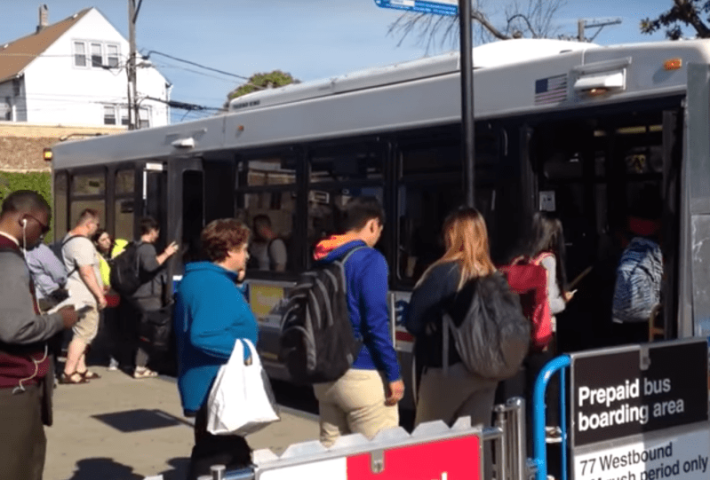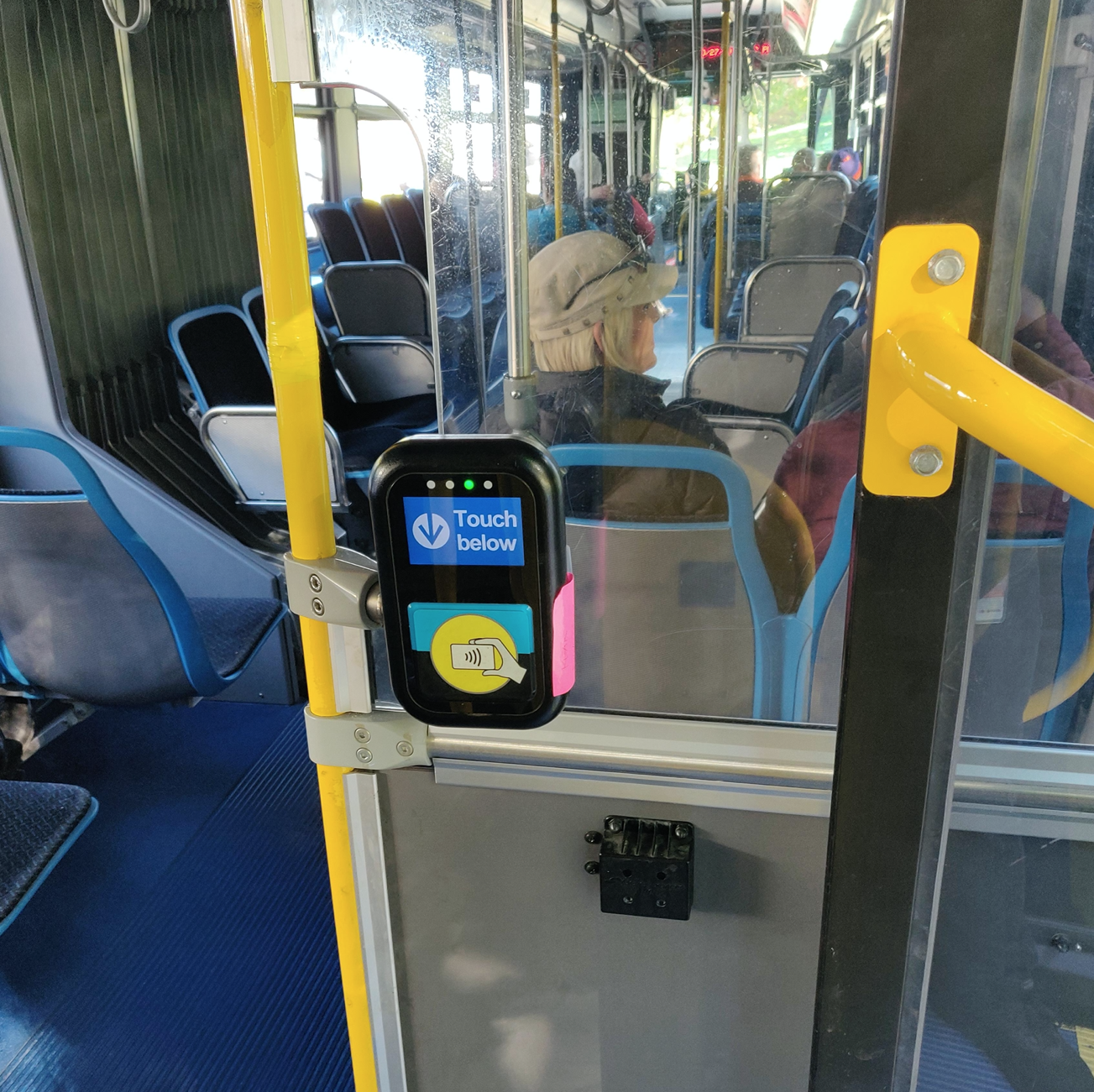Better late than never.
While many or most major U.S. cities waived bus fares and implemented rear-door boarding days or weeks ago to reduce COVID-19 exposure for drivers and passengers, the city of Chicago has dragged its feet on this best practice. Streetsblog advocated for the strategy a week ago, and ten CTA bus and train operators have already tested positive for the disease.
Today the CTA announced that it will be introducing rear boarding immediately, but the free fare policy will only last a few weeks. That will preserve fare box revenue, but may make the rear-boarding tactic somewhat less effective for preventing viral transmission.
The transit agency was already planning to test all-door boarding on two bus lines this year as a strategy to reduce "dwell time" at stops, installing Ventra card readers inside the rear door. Starting tomorrow, most customers will be required to enter through the rear, so that they don't pass near the operator, reducing the chances of spreading the coronavirus. (All buses currently in service have a Plexiglas shield that partially protects operators from respiratory droplets, and masks and gloves are provided to them.) While the front of the bus will be chained off, people with mobility challenges will still be allowed to enter through the front to use the wheelchair ramp or have the bus "kneel" for them.
For starters, passengers will be allowed to board buses for free, as in the case in other cities. However, the CTA is in the process of equipping all of its fleet with the rear-door card readers, and installation is expected to be completed within a few weeks. As soon as entire lines are outfitted, passengers will be required to start paying again.
CTA ridership is currently down about 80 percent overall, and the system is hemorrhaging roughly $1 million a day, according to spokesman Brian Steele. Therefore reinstating bus fares before the pandemic ends, as opposed to keeping bus service free, will slow the bleeding a bit. Steele also argued that another reason to bring back the fare requirement before Illinois' Stay at Home order ends is to discourage non-essential transit trips, which are banned under the order.
However, I've heard no reports of an uptick in unnecessary bus ridership in other cities that have waived fares. It seems that most people understand that during a global pandemic it's a bad idea to ride transit unless you really have to.
Moreover, a downside of bringing back bus fares during the crisis is that it could result in more viral transmission. When customers are required to swipe their cards again, that will slow down boarding somewhat, causing more queuing. And passengers paying in cash will presumably be required to use the front door again, bringing them close to the driver.

According to Steele, the delay in implementing rear-door boarding was due to the need to train drivers on the rear-boarding protocols; design and install instructional signs at the front and rear doors; and plan for card reader installation -- another drawback of not waiving fares during the crisis.
Steele said the CTA hasn't calculated how much the temporary fare hiatus will cost. But the income loss is expected to be relatively insignificant compared to the major funding blows the system will likely have to weather due to falling sales tax and real estate transfer tax revenue during the coming recession.
About 20 percent of CTA buses have automated rear doors the driver can open. On the rest of the vehicles, customers will need to grasp the rubber strip along the door to pull it open. Steel said the doors will be disinfected throughout the day, but customers should wash their hands or use hand sanitizer after riding.
One potential major upside of the CTA's paid rear-door-boarding approach would be if the new card readers stay in place after the pandemic is just a bad memory, so that all-door boarding will become the norm on all lines. An ongoing prepaid, all-door boarding pilot involving westbound buses at the Belmont Blue Line station during the PM rush has seen a 38-second average decrease in bus-boarding times, a 54 percent improvement. While using rear-door card readers obviously isn't prepaid boarding, having two ways to enter the bus would shorten lines and reduce dwell time somewhat.

However, it's not certain that all-door boarding will become the norm after the crisis is over. "Under normal conditions, further analysis would be needed to determine the feasibility of offering rear-door boarding full-time," responded a CTA spokesperson to my follow-up question on the subject. "[However,] this is still the plan under the planned all-door payment pilot slated for this summer." That test will include the J14 Jeffery Jump and the #192 University of Chicago Hospitals Express.
During the COVID-19 crisis, some cities have taped signs on bus and train seats telling people to sit elsewhere to encourage 6'+ social distancing. However, Steel said the placards are often removed or damaged, and noted that the CTA has about 1,800 buses and 1,400 railcars where the signs would need to be installed, so it's not going that route.
However, in the wake of dangerous crowding on routes such as 79th Street, the CTA has removed accordion buses from lines that are currently seeing light ridership and deployed them on busier routes. And a new policy debuting tomorrow allows drivers to switch to drop-off-only mode when they have 15 customers on a regular bus, or 22 passengers on an articulated vehicle. When that happens, additional buses will be dispatched to pick up the slack.
"We do understand that these changes will be new for CTA customers," Steele said. "Like a lot of aspects of daily life, many routines on CTA have changed or will change, but at some point we will return to normalcy."
Here are some tips on preventing the spread of COVID-19, and advice for Chicagoans on what to do if you think you may have been exposed to the virus.




